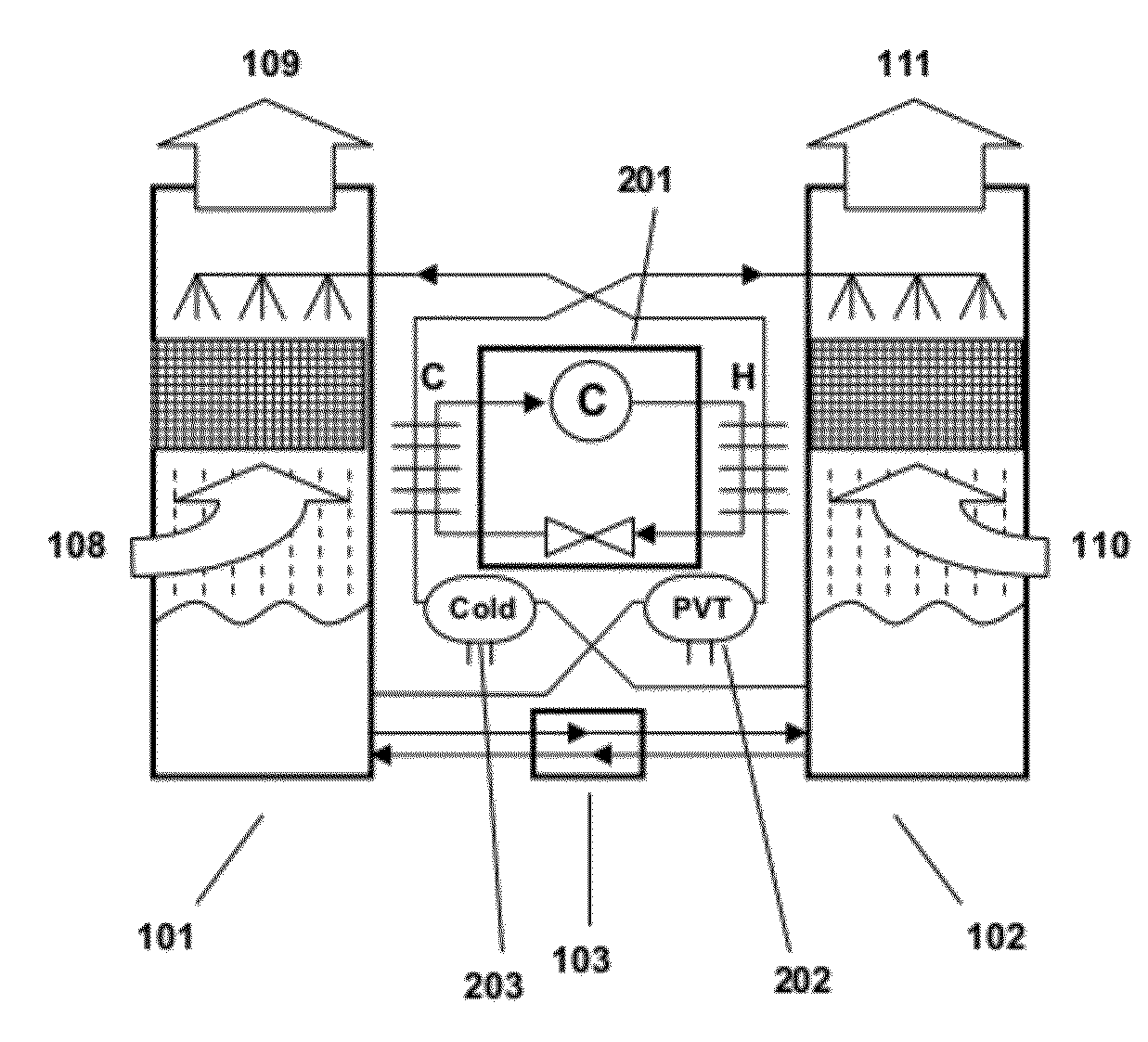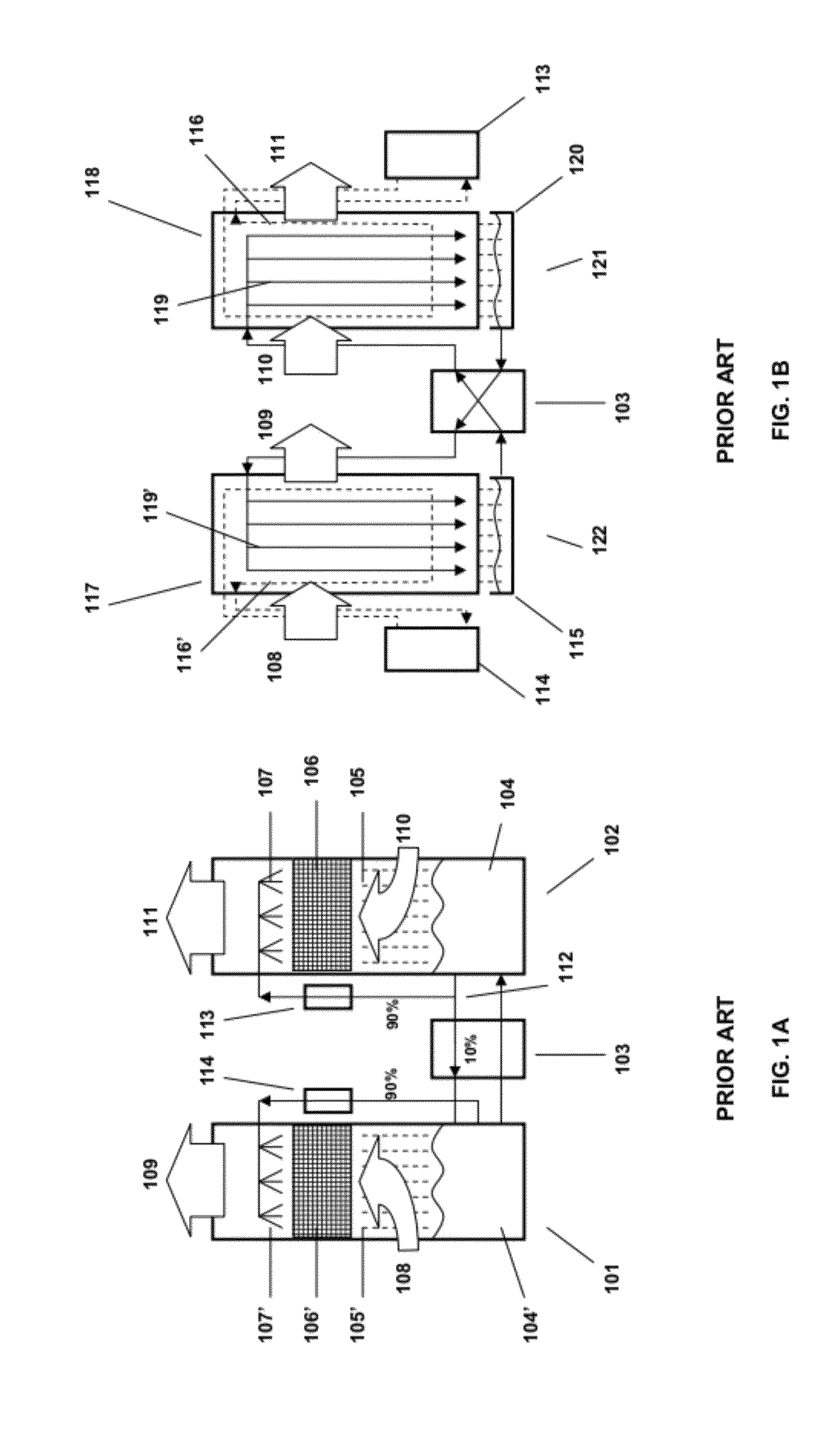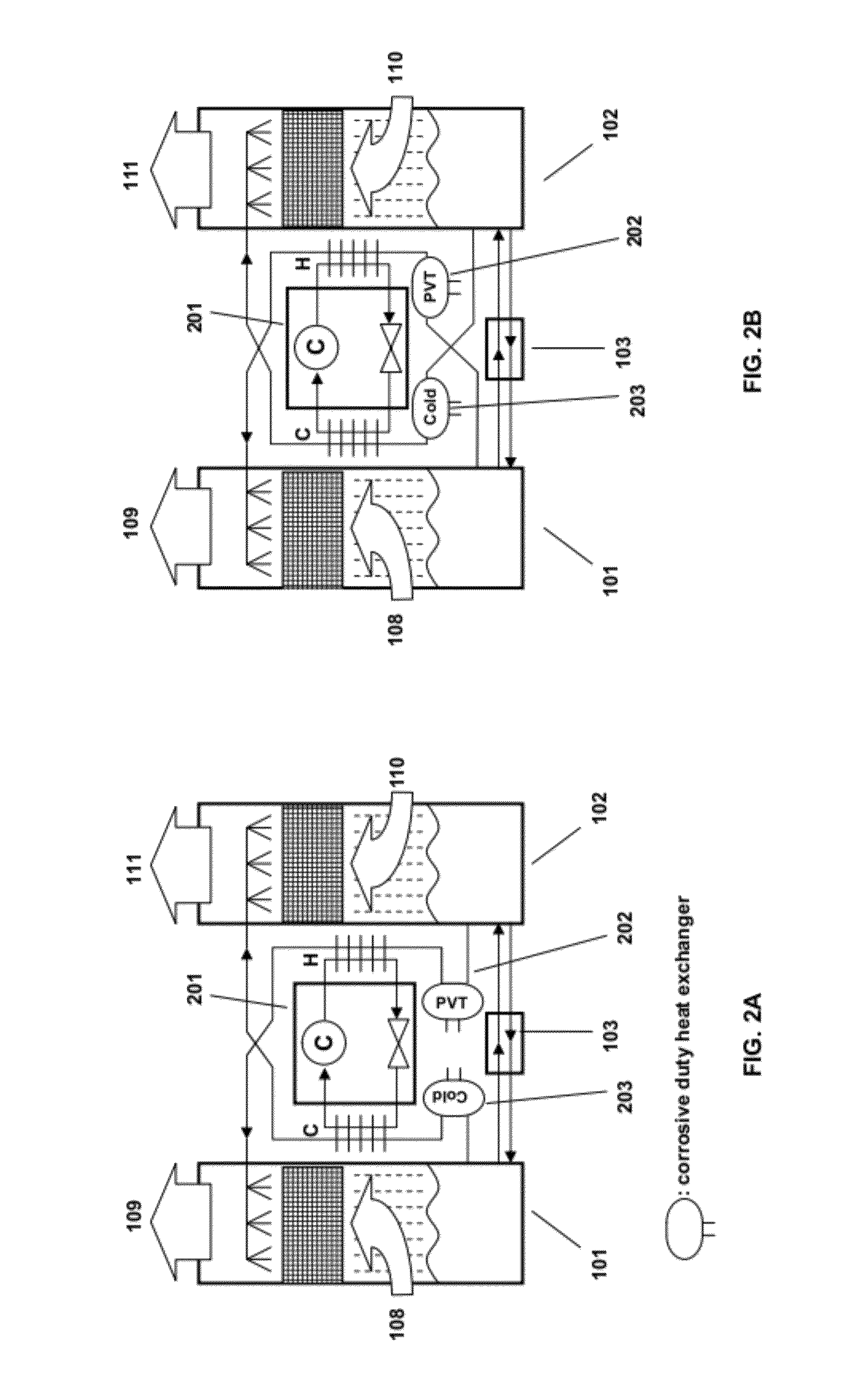It is well known that air conditioning is an enormous source of energy use and that summer cooling in particular can lead to
electricity grid problems.
In many buildings, such sensible only heating results in
humidity levels that are too low for comfort.
Such humidification however results in the cooling of the air, which means that additional heating will have to be applied to counteract the
cooling effect of the humidifier.
However, the
heating effect that occurs when air is dehumidified in an adiabatic fashion (no heat is added or removed) requires large amounts of sensible cooling post-dehumidification and as a result limits the energy savings that can be obtained.
However, the use of low pressure vacuum systems significantly increases the cost and complexity of the equipment and increases the requirements for maintenance.
Also, each transition (from air to a
heat transfer fluid to the
desiccant) utilizes heat exchangers, fans, and pumps and thus results in higher costs.
And importantly, such transitions result in larger temperature requirements since each transition is not perfectly efficient.
As a result, absorption chillers require higher temperatures to operate making them less suitable for integration with systems that employ
waste heat or low grade heat.
Liquid desiccant systems however have traditionally suffered from the risk of
desiccant carry-over into the air
stream resulting in sometimes severe
corrosion problems in the building since the desiccants that are used are typically strongly corrosive to metals.
The spraying increases the risk of
desiccant carryover into the air
stream.
However, these mist eliminators require frequent maintenance and replacement.
Furthermore, the process of using a
filter media is inherently energy inefficient.
The
filter media is an obstruction in the air flow and thus generally requires large fan power.
Also, the
filter media typically are thermally non-conductive which makes the dehumidification process adiabatic resulting in undesirable heating of the air.
Increasing the flow rate of course increases the risk of desiccant carry over and requires more liquid pump power.
Furthermore, the drain pans do not easily allow the
system to be set up as a “split”
system wherein the conditioner and regenerator are located in physically separate locations.
In addition, the drain pans do not easily allow for the
system to be expandable: one has to increase the size of the pan—which means a new design, rather than adding capacity through a
scalable design.
However this approach still utilizes a horizontal air flow—which makes it much harder to integrate to a rooftop installation—and a very complex conditioner design that has a desiccant drain pan at the bottom, but does not allow for a
counter flow between the air and the liquids.
This system also still has the risk of desiccant carryover since the desiccant is still directly exposed to the air flow.
Higher regeneration temperatures necessitate higher quality (temperature) heat sources and thus are less easily available.
At worst, the system has to be powered by a non-
waste heat source such as a hot water furnace.
Yazaki absorption units have been powered by
evacuated tube solar thermal modules that are able to generate heat as high as 100° C. Concentrated solar thermal modules are able to achieve even higher temperatures, but oftentimes do so at higher costs.
Glazed flat plate solar thermal collectors typically operate at somewhat lower temperatures of 70-80° C., but also lose a significant portion of their efficiency at higher temperature, which means that the array size needs to be increased to generate adequate power.
Unglazed flat plate solar thermal collectors have higher efficiencies at lower temperatures, but generally lose a lot of their efficiency at high temperatures and are usually not able to achieve temperatures higher than 60° C., making them unsuitable for integration with absorption chillers.
None of the
solar heat sources mentioned above (concentrated solar thermal,
evacuated tube collectors and glazed and unglazed flat plate collectors) generates
electricity at the same time as generating heat.
However, all air conditioning systems still require electricity for fans and liquid pumps.
Electricity is oftentimes much more expensive per unit of energy than fuels used for heat.
It is known that solar Photo-Voltaic Modules (PV modules) heat up significantly in direct
sun exposure with temperatures approaching 70-80° C. Such temperatures have a deteriorating effect on the performance of the module since module performance degrades with an increase in temperature.
From a cost perspective, solar thermal systems augmented with conventional PV modules are less cost effective than PVT modules and take up more space than PVT modules.
However, PVT modules generally supply lower temperatures and efficiencies than pure solar thermal systems.
 Login to View More
Login to View More 


